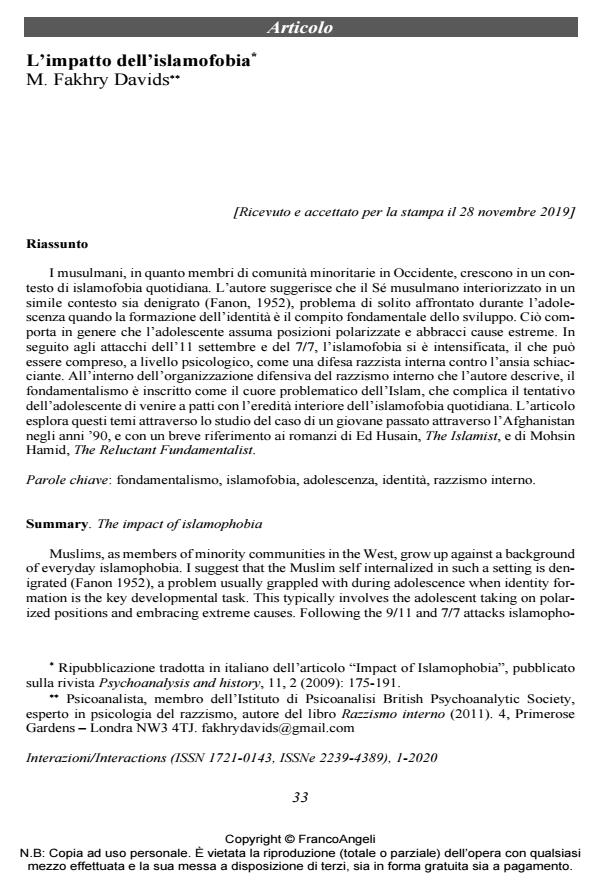The impact of islamophobia
Journal title INTERAZIONI
Author/s M. Fakhry Davids
Publishing Year 2020 Issue 2020/1
Language Italian Pages 19 P. 33-51 File size 207 KB
DOI 10.3280/INT2020-001003
DOI is like a bar code for intellectual property: to have more infomation
click here
Below, you can see the article first page
If you want to buy this article in PDF format, you can do it, following the instructions to buy download credits

FrancoAngeli is member of Publishers International Linking Association, Inc (PILA), a not-for-profit association which run the CrossRef service enabling links to and from online scholarly content.
Muslims, as members of minority communities in the West, grow up against a back-ground of everyday islamophobia. I suggest that the Muslim self internalized in such a setting is denigrated (Fanon 1952), a problem usually grappled with during adolescence when identity formation is the key developmental task. This typically involves the adolescent taking on po-larized positions and embracing extreme causes. Following the 9/11 and 7/7 attacks islam-ophobia intensified, which can be understood, at the psychological level, as an internal racist defence against overwhelming anxiety. Within that defensive organization, which I describe, fundamentalism is inscribed as the problematic heart of Islam, complicating the adolescent’s attempt to come to terms with the inner legacy of everyday islamophobia. I explore these themes through a case study of a young man who travelled to Afghanistan in the 1990s, and by brief reference to Ed Husain’s The Islamist and Mohsin Hamid’s novel The Reluctant Fundamentalist.
Keywords: Fundamentalism, islamophobia, adolescence, identity, internal racism.
M. Fakhry Davids, L’impatto dell’islamofobia in "INTERAZIONI" 1/2020, pp 33-51, DOI: 10.3280/INT2020-001003